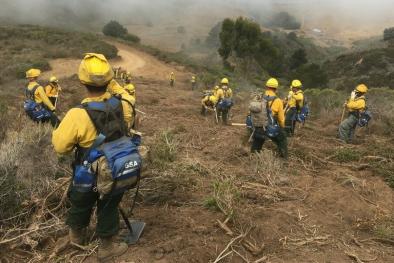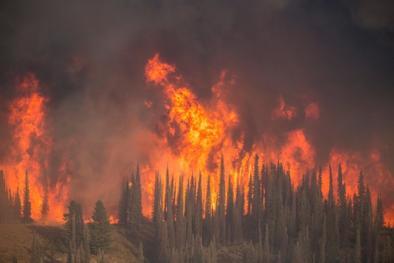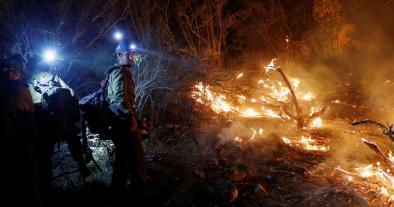Science Source
Decreasing fire season precipitation increased recent western US forest wildfire activity
- States that increases in area burned by wildfires in the western United States have been widely attributed to reduced winter snowpack or increased summer temperatures
- Shows that previously unnoted declines in summer precipitation from 1979 to 2016 across 31–45% of the forested areas in the western United States are strongly associated with burned area variations
- Shows that the number of wetting rain days (WRD; days with precipitation ≥2.54 mm) during the fire season partially regulated the temperature and subsequent vapor pressure deficit (VPD) previously implicated as a primary driver of annual wildfire area burned
- Uses path analysis to decompose the relative influence of declining snowpack, rising temperatures, and declining precipitation on observed fire activity increases
- Results suggest that precipitation during the fire season exerts the strongest control on burned area either directly through its wetting effects or indirectly through feedbacks to VPD
Related Content
Headline

Oct 20, 2016 | High Country News
The 10 most expensive wildfires in the West’s history
Headline

Oct 20, 2016 | Boise Weekly
Pioneer Fire Makes List of Top-10 Most Expensive Western Wildfires
Headline

Sep 23, 2016 | Rolling Stone
Summer of Hell and High Water Shows Climate Change Is Here
Headline

Sep 20, 2016 | KIRO
Threat of climate change wildfires growing in Northwest


